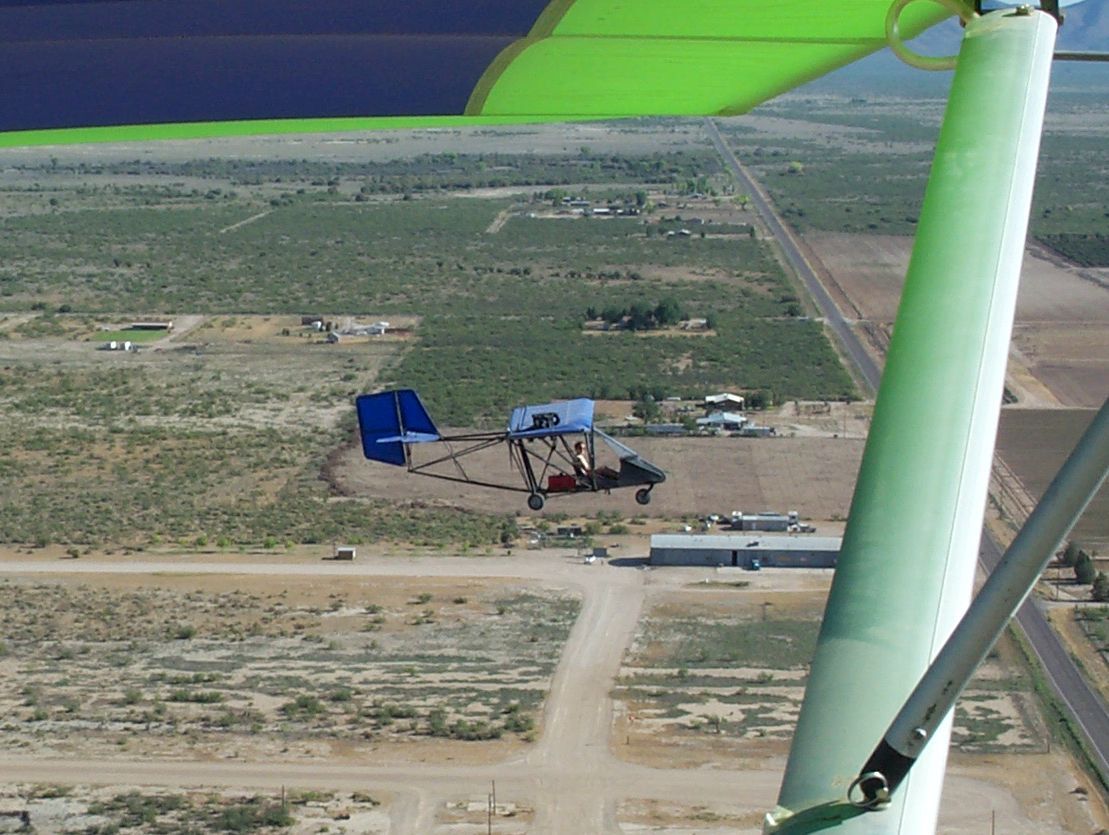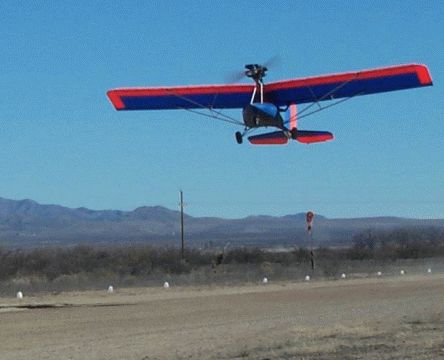By Megan Cummings
The dream of flight infects many people at some point in their lives — even those that should never come near an aircraft. I’m talking about people that can’t steer a riding lawnmower out of trouble; people that walk into immovable objects without flinching; people that make insurance companies go bankrupt. People like me.
I grew up on a farm and after causing an unspoken monetary sum of property damage, was banned from machinery that was either a) larger than me, or b) faster than our arthritic dog. My sister drove the two-ton tractor, I drove the orchard scooter.
I believe my parents and I would unanimously agree that teaching me to drive could have been grounds for emancipation. Parenting handbooks do not explain the best way to handle your child stalling the car while crossing a busy highway and going into a hypnotic trance. Screaming and flailing at four lanes of 65 mile-per-hour traffic doesn’t help, but I don’t need to remind them of that.
Despite their good work, I rear-ended another vehicle within a month of receiving my license, and ended up nearly vertical in a ditch the second month. If it wasn’t for the fact they didn’t want me living at their house forever, I’m sure they would have buried my license.

It’s not only my lack of depth perception and fine motor skills that concern those that care about me and/or their property. It is how I react to stress that scares them the most. When confronted with a situation that requires an immediate response, my IQ drops to the legal blood alcohol level and my entire nervous system takes a nap.
I don’t know how my genetics made it as far as they did, because if I had been a monkey, I would have fallen out of the tree and into my predator’s mouth a long time ago.
Flying appealed to me from the time I saw The Gods Must Be Crazy II, in which the main character flew around in an aircraft that looked like Americanized origami. I was about eleven years old at the time and, inspired, I took up flying paper airplanes, which only got me as far as the detention room.
When I was thirteen, I had the opportunity to have an introductory lesson in a general aviation plane at an aviation summer camp. (Other kids went to basketball or volleyball camp, but getting hit in the head that many times didn’t appeal to me.) However, after the instructor landed the plane at a faster-than-comfortable speed and a rather odd angle (a sideways slip) I wasn’t very keen on learning how to fly it. The Cessna 172 was too large, too complex, and far too expensive for me. Accustomed to destroying things, I was looking for the moped of airplanes.
When I was nineteen, I tried talking my dad into letting me get an ultra-light. I was home from college and was working for a farm that had an airstrip. “I could fly to work, dad, and then you don’t have to worry about me wrecking the truck.”
He apparently wasn’t worried about me wrecking the truck.
I may not have pursued my interest in aviation, but I did talk about it. One day, when I was 22 and living in Arizona, a friend of mine said he knew people that flew ultra-lights at a private airfield. I had never seen one up close, and wanted to, so we headed out to the airfield that weekend.
Like stoned tropical birds, the ultra-lights sat quietly in the hangar, staring at the wall or each other, with their wings outstretched. I watched as pilots pushed their aircraft outside on skates. They were different colors, shapes, sizes; some had pods, some had only a seat, but they were all comprised of tubing, cables, and fabric. I could see myself flying any of them.
I jumped into the two-seat trainer for an introductory flight with a jovial and reassuring instructor. I couldn’t imagine him screaming or flailing, so he seemed like a safe bet. I squealed when we took off, a noise I don’t recall ever making before. I could feel the rudder pedals move under my feet and the control stick move in my hand as my instructor moved his set of controls. The wind was whipping by my side at 60 miles per hour and I could look straight down at the ground. We dove down, cruised about ten feet above the mesquite bushes, bounded over trees, and then shot up skyward again.
Awestruck, I had a sensation deep in my belly like falling in love.
Insurance is non-existent for ultra-lights, especially since people like me assemble them without supervision, therefore, after my (successful) solo flight I had nothing to fly. Determined, I sold my soul for a heftier paycheck and decided to invest in my own ultra-light. Knowing myself well, I purchased a sturdy-looking 1983 Tierra T-Bird II with an airframe mechanic, Joe, as my partner. The T-Bird II had been converted to a single-seat, tri-cycle gear configuration, which made it a very stable bird for low-time pilots like us.
My instructor, Ben, was the test pilot and gave it a hard workout and, while impressed by its ability to stand on a wingtip during a tight turn, was not excited about its stall behavior. When most planes stall, they just sink towards the ground. Not this one; due to the aforementioned modifications, the nose drops straight towards the earth like a heron that has just spotted a fish.
“Whatever you do, don’t stall it on landing,” was the emphatic advice given by Ben after his test flight.

Terrified I would never get the courage to fly the unruly beast, I crawled into the ultra-light, turned the key, and gave the pull cord a couple of good yanks. The two-stroke engine struck up a cadence directly above my head and reminded me to put in earplugs. The brand new prop spinning behind me was the most recent addition to the aircraft and made a satisfying swishing sound. I could feel the force of the prop blades moving the air when I locked the wheel brakes and ran the engine up to a respectable rpm.
I pulled the throttle back, wiggled my control surfaces around, and released the brakes. I taxied to the end of the runway and turned around. With a deep breath, I gave it full throttle, and slowly the two hundred pounds of aluminum tubes, fabric, and cables began accelerating. At about forty miles per hour it began to get light on the wheels, so I pulled the throttle back to keep it from lifting off the ground completely.
I did this three or four times before I taxied over to where Ben and Joe were standing.
“Do you think I can take it up and around the pattern?” I asked Ben, the words escaping through my chattering teeth. He cocked an eyebrow as he saw that it was my legs shaking so violently on the rudder pedals that caused the entire tail section of the aircraft to mimic an excited dog.
“Do you think you can?”
“Yeah,” I lied, mainly to myself. One of my mother’s favorite sayings is, “Fake it until you make it.” So that’s what I did. I faked confidence.
Staring down the dirt runway, noting the slight crosswind teasing the windsock, I leaned forward and pushed the throttle all the way. I danced on the rudder pedals to keep the aircraft going straight down the runway and, after the air speed indicator went above 40 mph, I had to hold the stick as far forward as possible to keep it on the ground. At 50 mph I let the stick come back towards my belly and the ultra-light, with its 33-foot wingspan, became airborne.
The whoop leapt from my throat spontaneously. Free from the ground, the ultra-light became as smooth as if it was sitting still. The steady hum of the engine and the gentle yaw as I crabbed into the crosswind were all that reminded me that I was attached to a mechanical device.
When my altimeter showed I was five hundred feet above ground, I initiated my first turn. The wing dropped easily enough, but I was not accustomed to pushing so hard on the rudder to kick the tail end around. I was concentrating on coordinating my second turn, the turn that would put me parallel with runway, when the explosion happened.
Ka-BAM…WHAP!
Whappety-whappety-whappety...
The first few words I thought, and uttered, were unoriginal expletives. Since the engine was above and behind me, I had no idea what had happened other, but quickly realized the ultra-light was no longer going forward as fast as it had been. In fact, it was about to stall.
Remembering my training, I pushed the stick forward and dove towards the ground to build my airspeed back up. I glanced at the airspeed indicator while looking for a landing spot. 45…45…45… I repeated to myself, which was the airspeed Ben had ingrained into my head for landing.
I was near the runway, but I needed to land into the wind. I spotted the taxiway, which was the right direction, and began lining up with it. 45…45…45…
As I got closer to the taxiway, I became aware I was sinking faster than I was getting closer. I wasn’t going to make it, and I knew enough not to try and stretch the glide. Each aircraft has its own glide path, and not the deepest breath in the world can make it longer than it is going to be.
I moved my landing spot about 50 feet before the taxiway and did something every life-loving cell in my body resisted — I pushed the stick forward, causing a steeper dive. My instructor had told me to do this to make sure I had enough airspeed to flare. Just as I was above ground I began to flare, pulling the nose back up so I was floating parallel with the ground.
What could have been a smooth settling of the aircraft on the ground was not to be. Unaccustomed to landing on rough ground, I let the nose gear touch down too soon after the mains, and it promptly plowed into one large mound of roots and dirt. I wanted to close my eyes as I became airborne again, but I kept my eyes on the taxiway and kept my feet and hands steering the aircraft. I bounced from one main wheel to the other until I rolled out to a full stop.
I was shaking so badly that I didn’t have enough coordination to climb out. I just sat there, trying to breath and not bite my tongue between my chattering teeth. My panic-reflex fortunately had the decency to wait until I was safely on the ground before reducing me to an incoherent mess.
The Air Force may not be trying to recruit me, and people may still chase me away from their aircraft, but when it mattered most I kept my head clear and remembered my training. Both the ultra-light and I made it safely to the ground.
I believe everything happens for a reason. I believe the exhaust pipe fell off and destroyed the propeller so that I had the chance to prove to myself that I can handle an emergency — instead of giving myself a panic-induced lobotomy and turning the ultra-light into a modern-art sculpture.
So once the ultra-light gets a new propeller and exhaust system, I will be ready to fly again.
And this time I won’t be faking the whole confidence thing. |